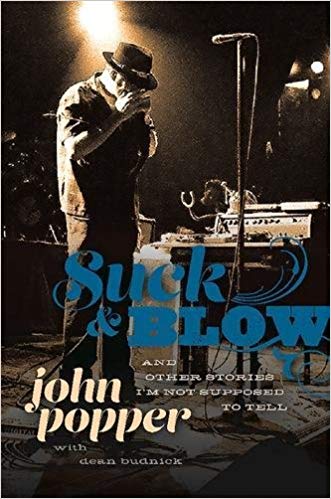Scott Albert Johnson is no stranger to the readers here. He was selected as our Harmonica Player of the Month and participated in our video tutorial series at SPAH several years ago (see video below). When we thought about who might be able to break down position playing to help people who might have only played in cross harp (second position) he was one of the first people who came to mind. Johnson was nice enough to walk us through his thoughts on playing in multiple positions and elucidate position playing for new players.
At What Point in Your Journey Did You Discover Position Playing or Did You Start With It Right Away?
I think I discovered it from the get go but I didn’t understand it. I didn’t come to the harmonica like a lot of people do. I played bass in bands in college and was a singer for a long time. Playing a harmonica was not my lifelong ambition. There are two ways people come to the harmonica. They are either trying to enhance their singer-songwriter performances with rudimentary playing, or they are trying to be a blues player and emulating Little Walter and Sonny Boy. I didn’t come from either of those angles. I was just trying to learn melodies or follow guitar solos. I didn’t know there was anything else but straight harp (first position, where the root note is four blow, seven blow and ten blow). A lot of times things wouldn’t sound quite right. I’m not sure if I stumbled upon cross harp (second position) on my own or on the Internet but that opened my eyes to how people played blues. I was also doing things like trying to figure out Widespread Panic songs or songs in minor keys. I would try to find the harmonica that sounded the best for whatever song we were playing.
Sonny Boy Williamson: “trust My Baby” in First Position
When Many Start Their Journey on This Instrument They Learn, Copy and Use the Vocabulary.
For the most part, I wasn’t doing that. I came to this with some musical background and a solid ear. I could tell if what I was doing sounded good even if I never heard of positions. Back then, I was even playing cheap harmonicas. I could get all the keys for $20.00! I became obsessed. I quickly figured out straight harp and cross harp (first and second position). In blues, cross harp (the root note is the two draw, six blow and nine blow) is the most common, followed by straight harp, then third position (the root note is one draw, four draw and eight draw). What I did was get one of those position charts that would tell you what position you’re in. The theory and the labeling came after the intuitive part.
It Sounds Like You Benefitted From Coming in With a Baseline of Music Knowledge. You Came Into It Thinking “i Want to Make Music” Rather Than “i Want to Play the Harmonica.”
That’s a great way of putting it. I don’t think of myself as a harmonica player. Maybe I’m brainwashing myself, but it’s just something I use to approach the music I want to make. It’s probably fair to say I am a frustrated horn player or guitar player. On the other hand I really do love the instrument or I wouldn’t have spent so much time on it (laughs). I also have so much respect for the harmonica players who are more traditional. I love what guys like Kim Wilson and William Clarke do. It’s just not the music in my head.
John Popper “brother John” Solo in Second Position

John Popper Wrote in His Book (“suck and Blow”) About How Harmonica Players Are Often Like a Lost Tribe Rather Than Musicians Who Do What Would Be Expected of Other Musicians.
I read the book too, and I totally agree with it. He has a unique voice on the instrument. I will say there is a little part of me that gets up and wants to push past conceptions others might have of harmonica players as musicians. It’s an instrument and, if you try to approach it with a blank slate, the possibilities are endless, and that’s a better way to approach music. I can now listen to my playing seven or eight years ago, and while I might only be slightly better, technically I’m much better about knowing when not to play. I think there’s just a never ending process of evolution for anyone.
For Players Who Don’t Have a Musical Foundation, How Would You Suggest Getting Started With Position Playing? a Lot of People Just Start in First Playing Folk Songs or They Will Begin Basic Blues in Second Position. Is It Worth Thinking of Positions at First or Should You Get a Solid Grasp of One Position and Build From There?
I teach a beginning harmonica class at Millsaps College in Mississippi. I think right away you should know straight harp and cross harp and start dabbling in both. It gives you a better conceptual understanding of the instrument rather than play this hole blowing out and this hole blowing in for Twinkle Twinkle Little Star. This is only a four-week class, but I show them what straight harp is and how to play single notes. I introduce a major scale. In the same lesson, we go over Twinkle Twinkle Little Star. I write the tabs on the board and ask them to figure out the rest. In that same first class, we do a breathing exercise on holes 1 2 3 and I explain to them that it’s a good breathing exercise and also a good basic introduction to blues.
I’m trying to get into their mind that a harmonica can be used for more than a campfire and blues songs. I want them to know it can be used for both of those things as well as other things like minor key songs. If someone just strictly wants to play folk songs then learn it simply. But that doesn’t give you the foundation that a broader understanding does. I have a friend named Arthur Jones who is a great Chicago style blues player. I have him come to class to demonstrate amplified harp. His style is very traditional. I think it’s very good for beginners to hear that but I don’t try to communicate that it’s the only way. There’s no one right way to do anything.
What Do You Like About Each of the Most Common Positions (first, Second and Third)? What Are Some of the Strengths of Each?
I think each position has its own personality. First position has a voice to it that is very melodic and can even be jazzy when you put overblows in. But it’s not as jazzy as twelfth position. Cross harp is more rhythmic because of that chugging on the lower holes. Beyond those personalities, each position has things it does well, particularly with the bendable notes. I often think about the notes I can use to be expressive. In twelfth position, the five draw is my root, and the six draw sliding into the five gives me this jazzy sounding lick. That’s something I really enjoy doing. I gravitate to a particular sound in the moment and then stick in that position unless I think of something I want to do that’s different. I’m familiar enough with all the positions that I almost don’t think about it consciously. If you have a good handle on these positions then nothing will be “wrong.” I can play a melodic song in second or twelfth and make it musically correct.
Anyone Who Gets a Decent Handle on Positions Won’t Stink It up or Make It Cacophonous. That Is Very Freeing When It Comes to Improvising. It All Becomes What Is Emotionally Resonant When You Improvise.
People Definitely Have Preconceptions About Positions Based on How the Instrument Has Been Played in Certain Contexts. for Example, in First Position, People Think Very Bluesy Sounds on the Low End or Jimmy Reed on the High End. I Found First Can Be Played With a Light, Fun Touch When We Do Ragtime Songs or Country Blues (see Video Above).
I’ve never looked at the harmonica with the same mentality as many who immediately set out to learn the national anthem of the instrument Juke. It’s a great song, and it IS worth learning, but I liked to think how what Little Walter played might work in what I was playing.
“the Deb” Harmonica Instrumental in Fifth Position:
What Are Your Thoughts on More Exotic Positions, Particularly Sixth Through Eleventh? Fourth and Fifth Can Work Very Well for Minor Key Music, but Except a Handful of Players, 6-11 Seems Like Uncharted Territory.
I’ve dabbled in sixth and eleventh and think there could be a use for both. They are certainly not as exotic as seventh through tenth. There are probably a handful of people who use those positions in any sort of fashion. Sixth makes sense for Middle Eastern sounding music and eleventh could work for jazz. If you overblow there is nothing illogical about sixth – I just haven’t worked with it. When I do decide to attack that, it will be the same thing as the other positions which are first through fifth and twelfth. I think of a song that lays out well in a particular position and learn it. I always got my head around a certain position by doing songs in that position. I do Summertime a lot, and I play third, fourth and fifth. Once you get adept at overblows and overbends, you can make these positions work. It just takes a little more mastery of techniques to make those positions work, but then you have a bigger palette.

Comments
Got something to say? Post a comment below.